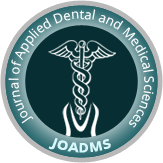Diode Laser Applications in Pediatric Dentistry

Review Article by Megha Sharma
- Senior Resident, Department of Dental Surgery, VMMC and Safdarjung, Hospital, New Delhi
Read Full Article
ABSTRACT
A replacement for conventional methods or in conjunction, laser technologies are expected to become an essential component of contemporary pediatric dental practice. Understanding the various uses of laser is simply to accept the cutting edge of present day pedodontics. Lasers are commonly used in efficient diagnosis of dental caries, preventive and restorative dentistry and in pulp therapy treatment in children.
Oral hard and soft tissues have a distinct affinity for absorbing laser energy of a specific wavelength. Diode laser has one of the most versatile ranges of wavelengths available due to the number of different therapies that can be performed in several tissues. They offer a comfortable and stress-free environment to the pedodontist and child by offering an excellent haemostatic effect, easy application, reduced pain, swelling and the use of post-operative antibiotics. The aim of this paper is to review the various diode laser applications in pediatric dentistry.
INTRODUCTION
In the present scenario, lasers provide a safe and uncomplicated alternative for dental treatment in children. The dental lasers of today have benefited from decades of laser research and have revolutionized several areas of treatment in the last three and a half decades of 20th century1. The most commonly used lasers in dentistry include holmium yttrium aluminium garnet (HO:YAG), neodymium-doped yttrium aluminium garnet (Nd:YAG), carbon dioxide laser (CO2), erbium-doped yttrium aluminium garnet (Er:YAG), neodymium doped yttrium aluminium perovskite (Nd:YAP), gallium arsenide (GaAs) (diode), erbium, chromium doped yttrium scandium gallium gar- net (Er-Cr:YSGG) and argon lasers. Out of these, Diode, neodymium, erbium, and CO2 lasers are approved by the Food and Drug Administration (FDA) for use in oral surgery2.
Innovative technologies, such as diode lasers, have provided considerable benefit to dental patients and dentists3. The Diode Laser can be used for a multitude of dental procedures which are predominantly soft tissue surgery, periodontal pocket therapy, peri-implantitis, but can also be used in endodontics for root canal disinfection, and in laser-assisted tooth whitening4,5.
The exemplary properties of diode lasers makes them more convenient and ideally suited for pediatric dental treatment. Absorption of energy gives diode lasers their ability to precisely cut, coagulate, ablate or vaporize the target soft tissue6. The laser energy is absorbed by pigmentation in the soft tissues, and this establishes the diode laser an excellent tool to haemostatic agent. Henceforth, on the grounds of efficacy and safety of diode laser in different wavelengths for specific procedures, this review article elaborates on its clinical applications in pediatric dentistry.
DISCUSSION.... Read Full Article
.png)
